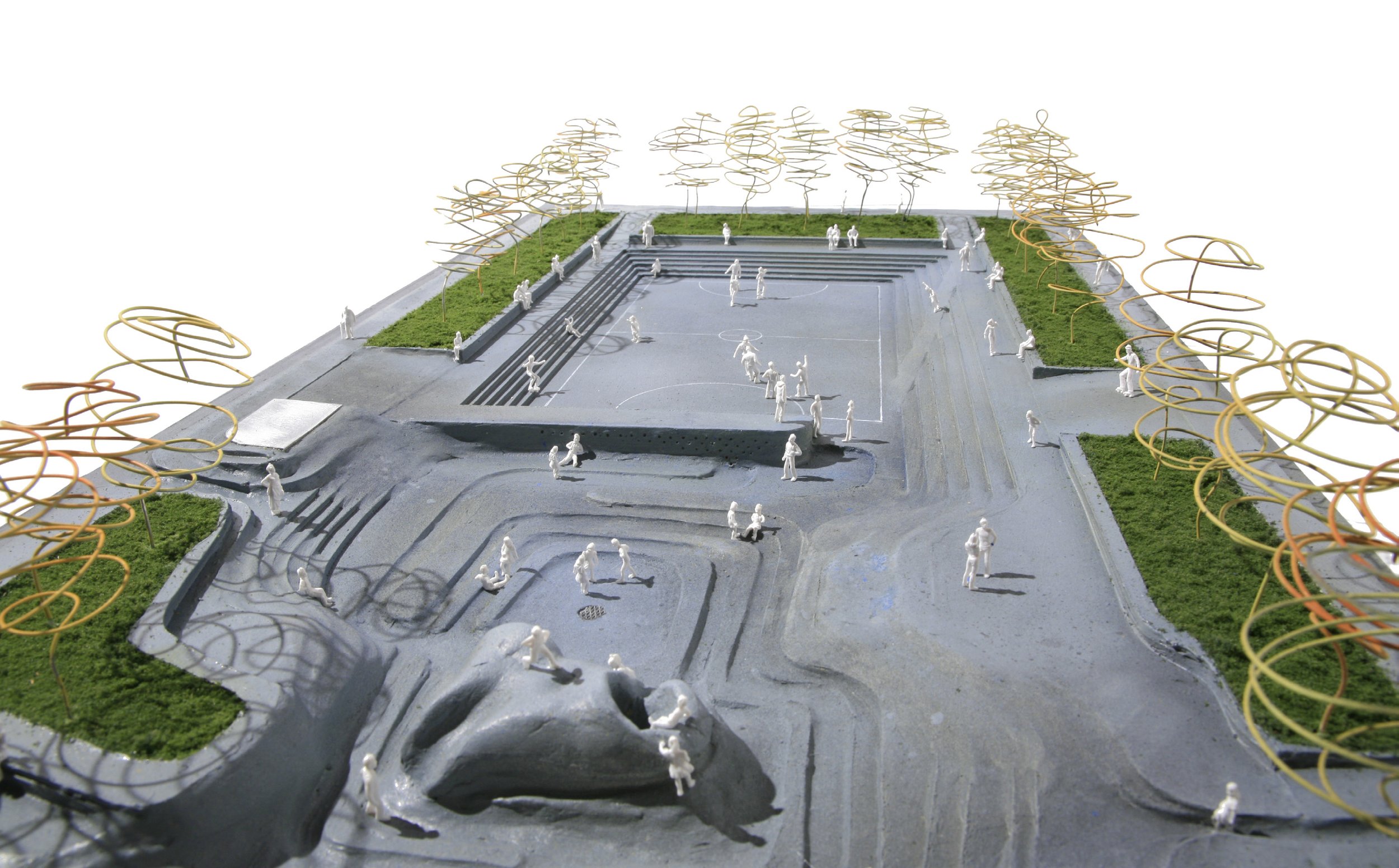
Watersquares
Rotterdam, The Netherlands
Location | Rotterdam, The Netherlands
Year | 2006 - 2010
Client | Rotterdam Climate Proof, City of Rotterdam, Co-financing by the Netherlands Architecture Fund (research and comic book)
Collaboration | Urban Affairs (all except comic book), Jeroen Bodewits (water square model)
Status | Typology research, approved policy on Municipal level, Pilot feasibility study, Comic book
The watersquare combines water storage with the improvement of the quality of urban public space. The watersquare can be understood as a twofold strategy. It makes money invested in water storage facilities visible and enjoyable. It also generates opportunities to create environmental quality and identity to central spaces in neighborhoods.
Most of the time the watersquare will be dry and in use as a recreational space. The exemplary design for the watersquare is divided into two main parts: a sports area and a hilly playground. The space is captured by a green frame of grass and trees. When heavy rains occur, rainwater that is collected from the neighborhood will flow visibly and audibly into the watersquare. Short cloudbursts will only fill parts of the square. When the rain continues, more and more parts of the watersquare will gradually be filled with water. The rainwater is filtered before running into the square.
The rainwater will be held in the square until the water system in the city has enough capacity again. Then the water can run off to the nearest open water. The watersquare is therefore also a measure to improve the quality of the open water in urban environments. After it has been in use as buffering space, the watersquare is cleaned. Therefore the design is made with fluent slopes.
A typological research and design on water squares was carried out in 2006-2007. The watersquare became official policy on an urban scale in the “Rotterdam Waterplan 2” in 2007. A pilot study was carried out in 2008-2009. In 2010 the graphic novel “De Urbanisten and the Wondrous Water square” was published by 010, Rotterdam.










